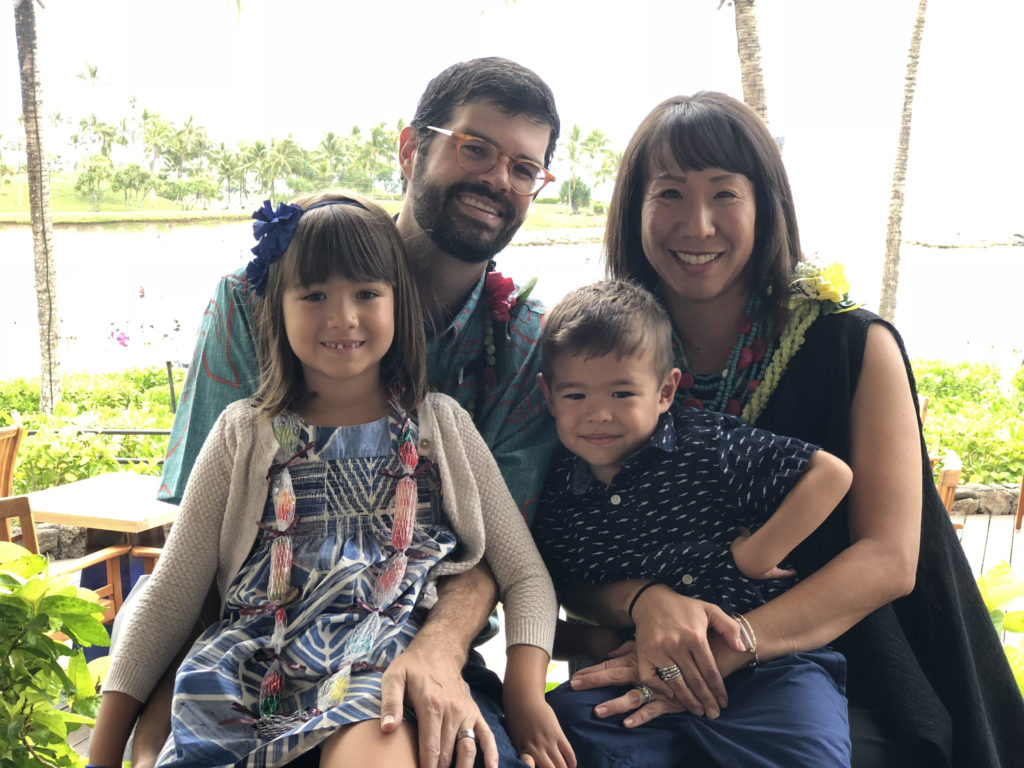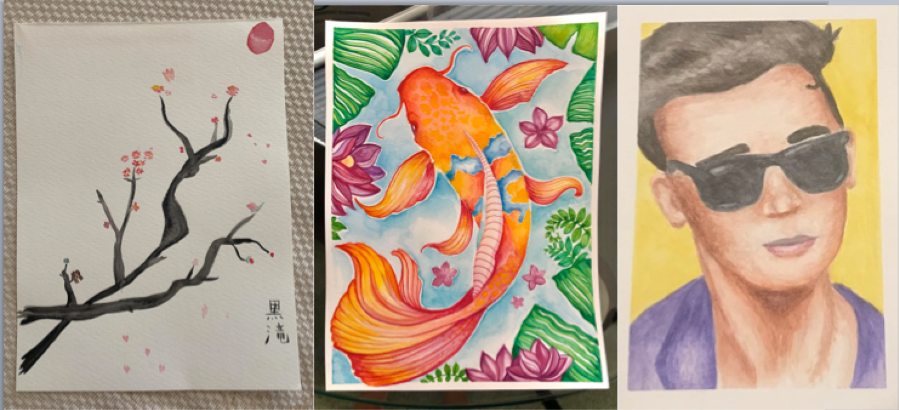By David Ball
Academy English teacher
Teaching in a pandemic has been an… adventure. Like many students and parents, I’m adjusting to having my family around me while I try to do my job. It hasn’t always been easy, but two weeks in and I think we’re making it work, as students (my second grader, Mira ‘30, and my preschooler, Calder), professionally (my wife, Cara Nakamura ‘95, and I), and as a family.

This semester, I teach sophomores, juniors and seniors, but I also find myself being a preschool and second-grade teacher as well – even if I’m a pale imitation of those last two roles. (Big shout out to my daughter’s real second-grade teachers Natalie Hayashi, Sheila Worley and Caryn Matsuoka ’90. How exactly do you do what you do?) The number of times I’ve had to shift rooms, or I see my students walking around their homes to get a patch of quiet, better Wi-Fi or a change of scenery, reminds me how difficult these challenges are. And of course we are the lucky ones if mild discomfort is our only experience of what’s transforming all of our lives. I’m teaching in the context of a crisis, and while my students’ learning is always at the forefront of my mind, I’m reminded as well that my first obligation is to my students’ safety and well-being. I’ve adjusted my pedagogy accordingly. I want my classes to be a break from the stresses of this context, not a burden, and to provide structure and meaning to what we’re experiencing collectively.
I’m very fortunate, then, to be teaching in a collaborative, competency-based and transdisciplinary model that centers on students’ independence, self-determination and meaning in the larger world. With Dr. Pam Sakamoto in social studies, I’m teaching a Bias Studies course that examines cognitive biases, determines the validity of information sources and addresses inequities along lines of race, class, and gender through a historical and literary frame. In this class, we’ve been discussing the pandemic directly, whether it’s how college students across class lines experience this disruption differently or some of the global effects of the disease. As a class we discussed this thought-provoking Hidden Brain podcast on the lessons of and comparisons between the 1918 flu epidemic and our own situation. The conclusions were sobering, but the conversation lively and perceptive, even via the mediation of the WebEx platform. Making connections between American history, literature and our students’ lived lives is one of the goals of the course, and we haven’t lacked for meaningful questions to discuss in this context.
I’m also teaching a Visual Storytelling course with colleagues in art and English that asks students to read, draw and paint simultaneously. Art has proven so important to many of us when confined to our own homes, and we fortunately sent our students home with their watercolor kits before spring break. The work they’re accomplishing is tremendous. Here are just a few examples.


All of my students in both classes are now beginning independent work on a subject of their own choosing. This means our roles as instructors will shift toward that of studio teachers, offering suggestions, providing encouragement and creating structures in which our students can produce their best work. Even given all the disruptions in our lives right now, I’m so excited to see what ideas and images emerge out of this moment, and to use the lessons of this experience to improve – and better appreciate – the unique learning opportunities of the physical classroom.
Writers and artists often use creative constraints – poetic forms like the sonnet or timed drawing exercises to capture the essence of a form quickly and fluidly – to stimulate their creativity. We hope this experience will also be a creative constraint for our students, limiting them in some ways, but inspiring them in others. I’m convinced we’ll get through this together, having learned a great deal about ourselves in the process, and creating some amazing things along the way. We’ve got this.
